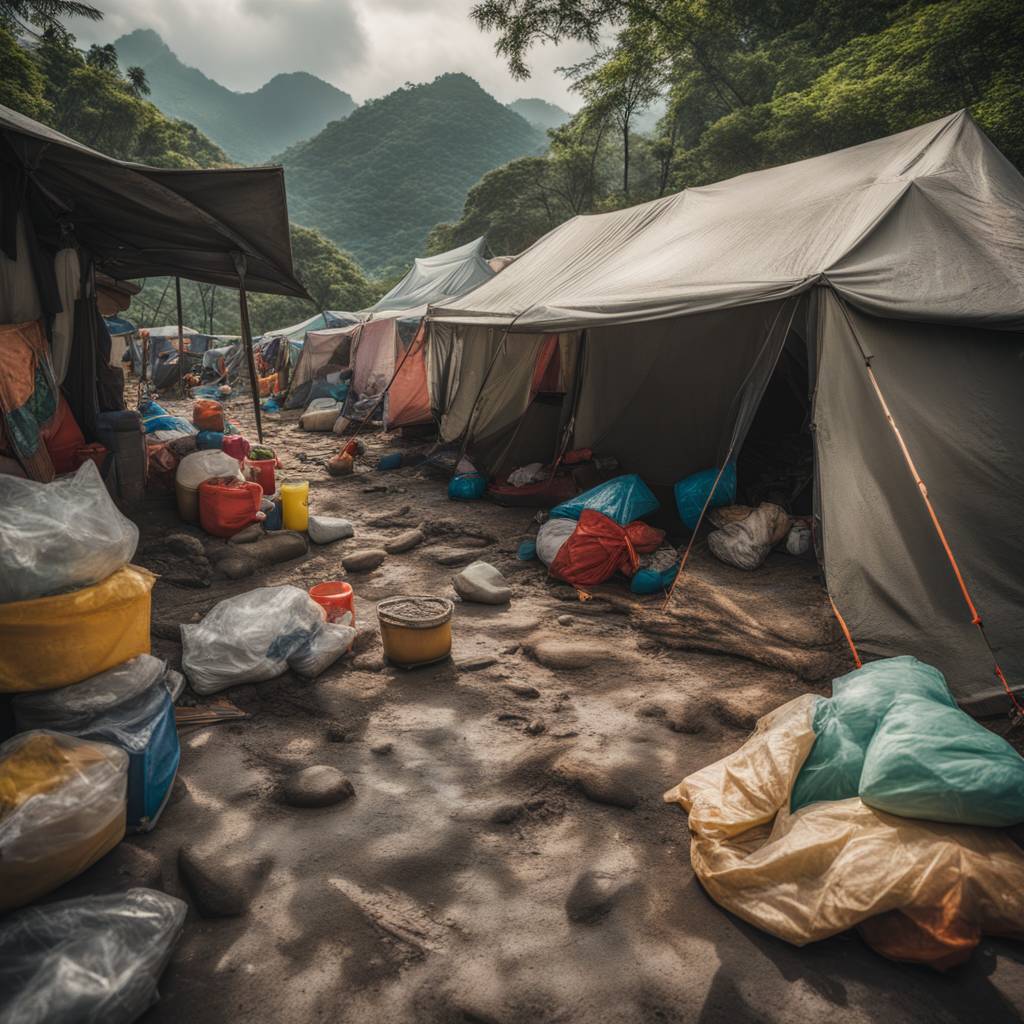The destructive earthquake that struck Hualien’s main city left the Uranus building leaning at a 45-degree angle, becoming a symbol of the devastation. For one resident, Chen Hsiu-ying, the building was not just a symbol but also her home. She narrowly escaped being inside the building when the earthquake hit, but she was still traumatized by seeing the shaking road and food vendors during the quake. Chen was eager to retrieve her belongings, including a photo of her mother, still trapped in the tilting building.
As the residents of Hualien struggled to come to terms with the aftermath of the earthquake, some started to consider returning to their damaged homes. Despite the initial shock and fear, more than a dozen people decided to brave the unstable conditions and try to salvage their belongings from their leaning buildings. However, concerns about safety, especially for families with children, prompted many to remain at the temporary shelters, like the elementary school where Chen and her family sought refuge.
One resident, named Hendri, expressed hope that his family’s stay at the shelter would come to an end soon. He planned to visit their home to assess the safety of going back inside, as authorities had previously warned against it. The uncertainty and anxiety of not knowing the condition of their homes added to the stress of the already traumatic experience. The psychological impact of the disaster was evident in Chen’s trembling hands and the fear she felt during the earthquake.
The images of the Uranus building leaning at a precarious angle served as a stark reminder of the destructive power of the earthquake. The sight of the iconic structure, once a place of work and comfort for many, now leaning precariously, was a haunting image of the disaster’s aftermath. The physical damage to buildings and infrastructure was a clear indication of the scale of the earthquake’s impact on the city and its residents. The symbolic significance of the Uranus building’s tilt reflected the residents’ shattered sense of normalcy and security.
The earthquake in Hualien left a lasting impact on the residents, who were left grappling with the trauma of the disaster and the uncertainty of the future. As they attempted to salvage their belongings and assess the safety of their homes, the emotional toll of the earthquake was evident in their actions and words. The experience of witnessing buildings tilt and roads shake during the quake was a deeply unsettling and unforgettable moment for many, including Chen and her family. The memories of the disaster would stay with them long after the physical damage was repaired.
In the aftermath of the earthquake, the residents of Hualien faced the daunting task of rebuilding their lives and their city. The process of recovery would involve not only repairing the physical damage to buildings and infrastructure but also healing the emotional scars left by the disaster. The psychological impact of the earthquake, as seen in the residents’ fear and anxiety, was a reminder of the resilience and strength required to overcome such a traumatic event. The road to recovery would be long and challenging, but the spirit and determination of the residents would help them emerge stronger from the devastation.


